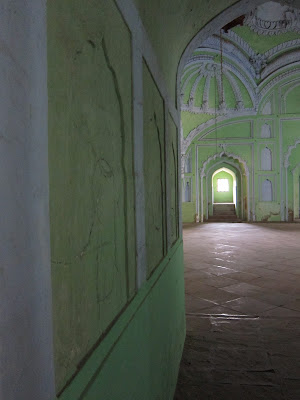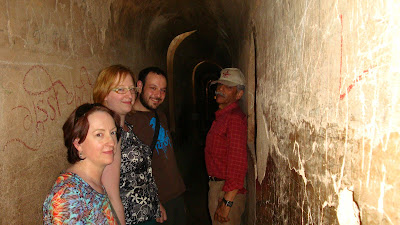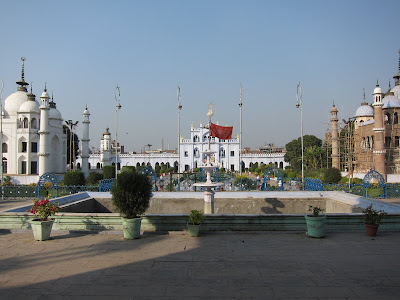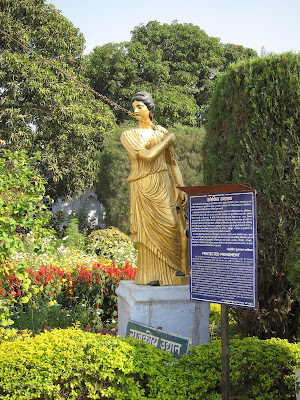The Bara Imambara boasts beautiful grounds, as usual, and a dramatic great hall.
The highlight though is the labyrinth. Within the Bara Imambara is a great maze of passages, stairs, intersections - some 1,023 possible paths and only one will lead you out.
We hired tour guides at our various destinations, but Arun was our shepherd and a treasury of information throughout. I thought Brij was the Indian history major in the family, but they all proved to be well versed. You may not see Arun smiling in many photos, but he was ever the cheerful and enthusiastic host. Thanks, Arun!
More stunning views and architecture on the roof. The roof that I suddenly remember burning my bare feet. Of course you pay a little to somebody outside to watch over your shoes. Fortunately we didn't have to cover our calves or heads, because I was wearing only a below the knee skirt and no scarf in the hot weather.
I'll admit I had to look up a couple of the details about the Bara Imambara. But I remember well that the Chotta Imambara was being built during a time of famine. The ruling Nawabs had the nobility tear down the building each night (our tour guide joked 'the only thing they were capable of doing'), so that the masses could continue their work and be fed indefinitely.
Inside the gate were two of the most elaborate lightning rods I have ever seen and a much smaller version of the Taj Mahal.
A royal bathhouse. Pictured here the queen's bath, always raised above the king's.
Both sites featured these float-like replicas of famous/holy places. Stand ins for pilgrimages to the real thing, I think. The picture doesn't capture how much they looked as though they'd been made of cardboard and tinfoil. Still full of detail and obviously well cared for.











No comments:
Post a Comment